One of my favorite things to do it make photographs of things that are invisible to the naked eye. Whether it’s capturing a split-second, or compressing multiple seconds into a single photograph, the camera can help us to see what, under normal circumstances, we can not observe.
Last week, I was driving over Independence Pass in Colorado,when I pulled over at a little spot in the road to stretch my legs and have a picnic. Here is a short clip I took to document the “reality” of the river.
While the video certainly portrays the power and frenzie of the recent snow-melt, my internal experience was a sense of calm. To capture an image that was more in tune with my feelings, I set up a tripod and put on my neutral density filters in order to slow my shutter speed and capture the “cotton candy” images below.
In situations such as this, I will typically capture several exposure of the same scene using slightly different shutter speeds in order to select the one that best recreates my experience. Below are three examples of different shutter speeds. The images on the left were captured with relatively faster shutter speeds (revealing a bit more turbulent motion) than the images on the right.
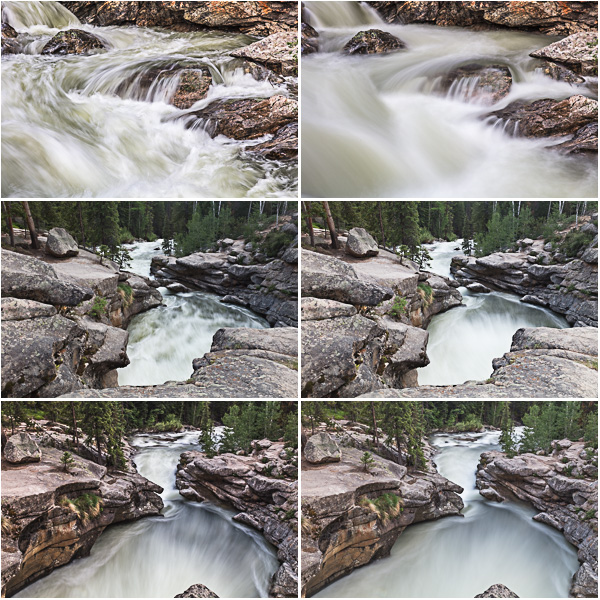
Once I decide on my camera settings, I will be sure to take multiple exposures as the volume of water and path of the river will make each capture unique. As you can see in the images below, even though my camera settings were the same for the pairs of images, the results are quite different.
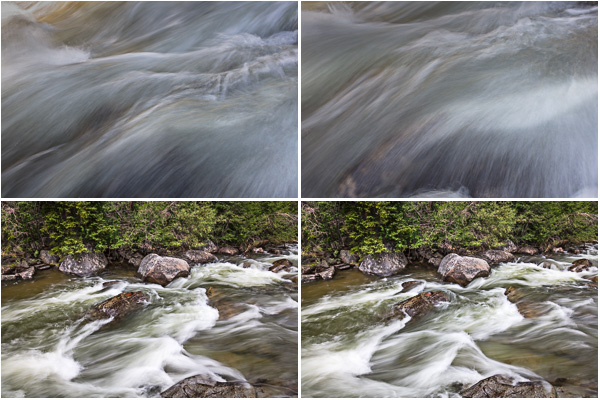
Because I tend to crop my photographs tight (in an attempt to minimize the chaos), I also try to remind myself to include images with a wider field of view in order to show context.


Because its not possible to accurately predict what the final image will look like, I often photograph scenes just to make sure that the camera isn’t able to see thing that I can’t. In the images below for example, as the slow shutter speed smooths the water, the positive and negative space in the image becomes more pronounced making the rocks and water more interesting than how my eyes interpreted them.
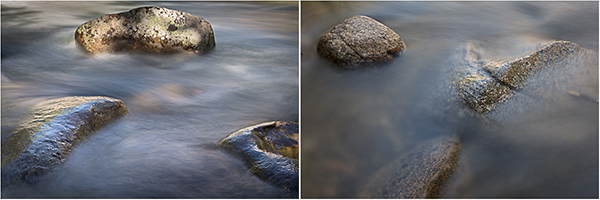
Finally, I made sure to capture a few vertical images and even played with shadows when the sun would peak out from behind the clouds.
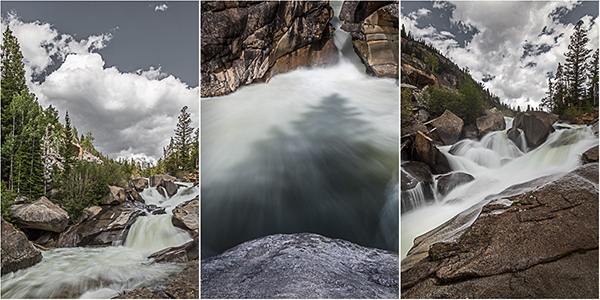
Each of us is an ongoing product of the world within us, the world between us, and the world around us—and their hidden capacity to shape our every thought, feeling, and behavior. —Adam Alter, Drunk Tank Pink
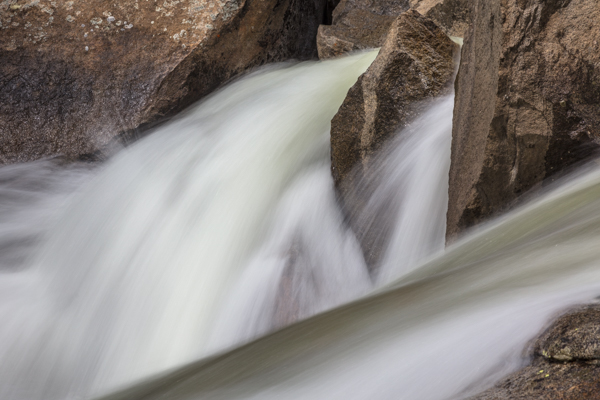

Great article – gives me some fun ideas! Do you use a ND filter at all, or just on camera settings?
Laura, I had to use two ND filters – sorry that I neglected to mention that!
These are truly so beautiful.
Each one is pure magic.
One can create a similar effect by making multiple exposures at higher shutter speeds and then combining them (it can be handy if you forgot to bring your +10 ND filter with you…)
More here: http://www.wolfnowl.com/2010/12/photographing-moving-water/
Thanks for sharing these wonderful images.